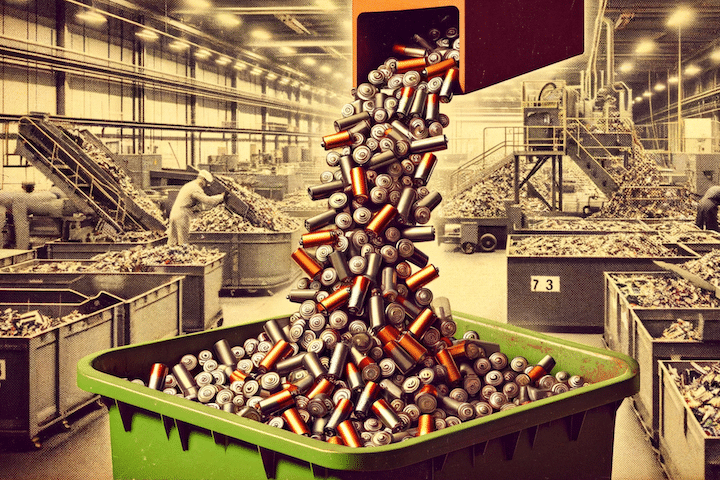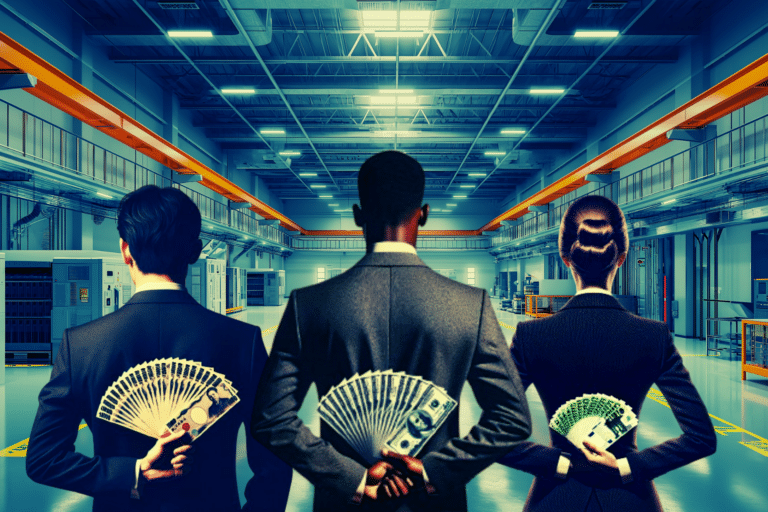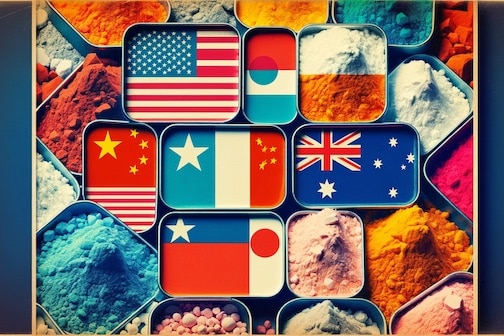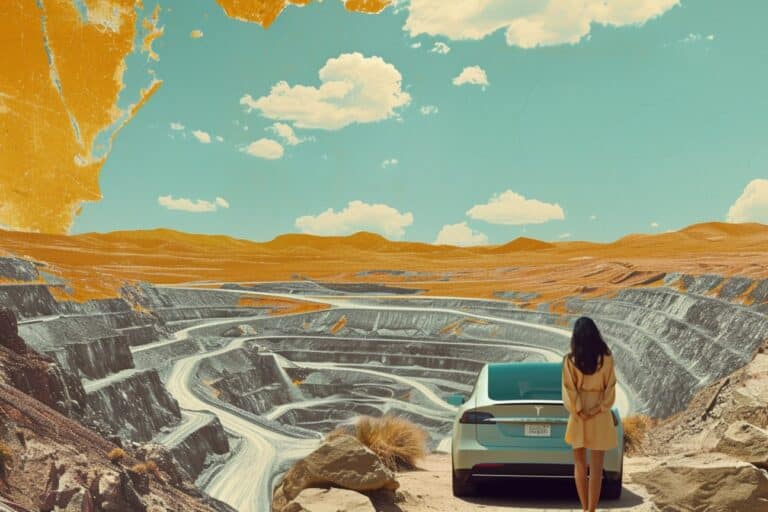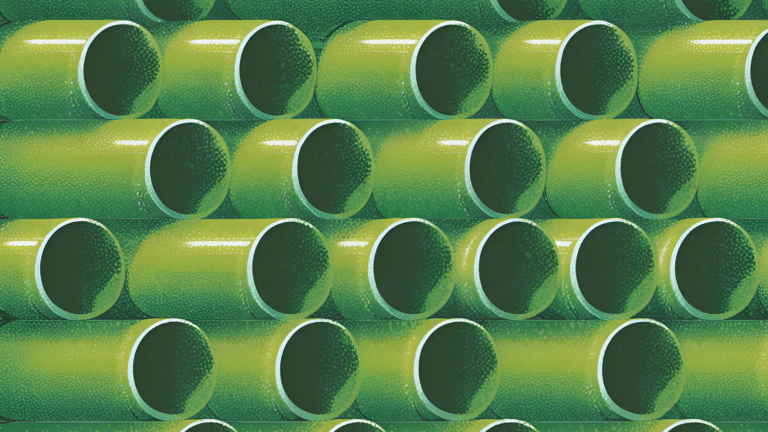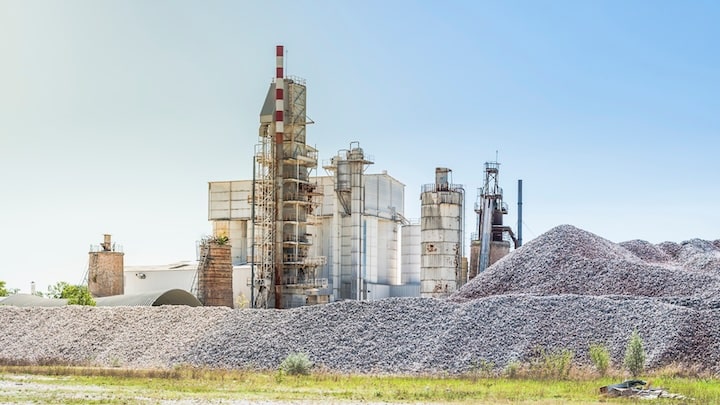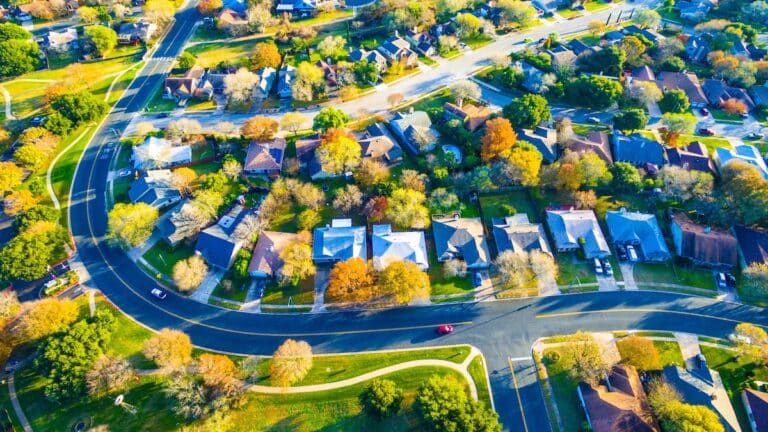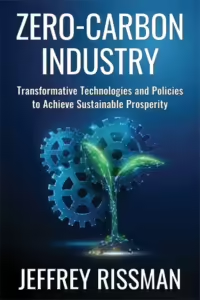Alexandria: [00:00:00] Hey, Melissa. [00:00:00][0.2]
Melissa Lott: [00:00:01] Hey, Alexandra. I have no idea what we’re about to do, by the way. So you’re going to have to guide. [00:00:06][5.1]
Alexandria: [00:00:06] Me through it. That’s good. I don’t want you to know. [00:00:08][2.0]
Melissa Lott: [00:00:11] Last week, one of our producers, Alexandra, came to me with an unusual request. [00:00:15][4.1]
Alexandria: [00:00:16] I had a little surprise for you, so I want. I went undercover. [00:00:18][2.3]
Melissa Lott: [00:00:21] What did you do, Alexandra? What did you do? [00:00:23][2.3]
Alexandria: [00:00:26] Since I’ve been working on this show with you. Every time I buy something new, every time I go to the grocery store, I feel like I have applied sort of some of your energy vision to my own life. And I start to get stressed because I’m like, you know, every time I buy something, every time I throw it away, I’m like, there’s so much carbon emissions in this stuff, probably. And I don’t know where it comes from. [00:00:47][21.4]
Melissa Lott: [00:00:48] But Alexandra is talking about is this thing that people say, I do. And if you’ve heard previous episodes, you may have heard that I have this obsession for seeing the carbon emissions and the energy in the world around me. They say it’s a bit like X-ray vision. [00:01:00][11.7]
Alexandria: [00:01:01] And that’s why I wanted your advice, because I want to go on a little mission together into an object and try and figure out where the carbon comes from in that object. [00:01:14][12.9]
Melissa Lott: [00:01:18] So Alexandra hunted down something really special. [00:01:21][2.4]
Alexandria: [00:01:22] The star of the hour. [00:01:22][0.7]
Melissa Lott: [00:01:23] Oh, toaster oven. [00:01:24][1.1]
Melissa Lott: [00:01:25] Oh, no. The door fell intentionally. Oh. [00:01:29][3.4]
Melissa Lott: [00:01:31] You got a good one. You got a good one. Thank you, Toaster. Thank you for giving your life to science. [00:01:35][3.9]
Alexandria: [00:01:37] I don’t think I’ve ever dissected an appliance before. I’m not going to lie. [00:01:40][2.7]
Melissa Lott: [00:01:41] You’re in for a treat. It’s super fun. Alexandria, and I literally dissected this poor toaster. And the goal was to find the carbon hidden inside. Whoa. [00:01:53][12.3]
Alexandria: [00:01:55] Now we’re seeing the guts. Look at this. [00:01:57][1.9]
Melissa Lott: [00:02:00] In this episode, we’re talking about the invisible carbon emissions that are embedded in everything around us. We’ll take you on a journey inside one toaster oven to try and answer the seemingly simple question of Where are they? This is the big switch, a show about how to rebuild the energy systems that are all around us. To slow climate change, we need to transform our buildings, homes, cars and the economy as quickly as possible. But how do we do it right? I’m Dr. Melissa Lott, and I’m the director of research at Columbia University’s Center on Global Energy Policy. And I study the technologies and systems of power our world. From the looks of it, I think, Alexandra, you have the four slice Black and Decker toaster oven. That is what I found. Yeah. All right. [00:02:54][53.6]
Alexandria: [00:02:55] You start screwing them out. [00:02:55][0.7]
Melissa Lott: [00:02:56] Absolutely. It was fun in part. So let’s start taking it apart. And if you can just lay out maybe in front of you all the different pieces as you take it apart. So we’re gonna want to think about how many screws are there and what types of metal might there be, and what types of rubber or plastics might there be. So just lay it all out in front of you as you start to take it apart. All right. [00:03:15][18.2]
Melissa Lott: [00:03:18] Teju Cole has done toast, has done. [00:03:20][2.2]
Melissa Lott: [00:03:21] Amazing. [00:03:21][0.0]
Alexandria: [00:03:23] Okay, So now we’ve basically just left the body of the toaster oven with everything. The case has been taken off. So we have, like the innards, the guts of this poor toaster oven are now exposed. [00:03:35][11.9]
Melissa Lott: [00:03:36] Okay, so picture this laid out in front of us on the carpet. Parts of the toaster, the glass, the metal screws, little bits of plastic wires and Alexandria. And I started thinking about the carbon emissions that were in every single piece and how many carbon emissions were in this toaster. Is it the total emissions in what you’re holding in your hands right now really depends on where it was made a lot. And that is because all the energy that went into pulling the different ores out of the earth, transporting them to a factory, then melting them into the thing you actually want. So a screw creating that glass door, creating those metal walls and that metal great toast, your toast on it. Also the heating elements actually do the toasting. All of that was created using a lot of energy. And depending on how much of that energy came from, fossil fuels, will determine how much carbon is embedded in your toaster. [00:04:25][49.2]
Alexandria: [00:04:26] Embedded. What does that mean, embedded? [00:04:28][1.8]
Melissa Lott: [00:04:29] So when you think about the the different things that were used to make your toaster, there’s carbon emissions associated with that. And so we can talk about the carbon emissions from power plant or we can talk about the carbon emissions from a truck. But in the case of your toaster, we can think about all those emissions as being required to make your toaster. So it’s not that the CO2 is actually physically inside the metal, but it had to be used to create that metal. So we call it embedded or embodied carbon. [00:04:53][24.0]
Alexandria: [00:04:54] So it’s almost like a carbon price tag you can put on it. Yeah, and you can. [00:04:58][4.5]
Melissa Lott: [00:05:01] After taking apart this toaster oven, I was left wondering how exactly do we get the carbon emissions out of the industries that produce all the parts of that toaster? What’s it going to take to produce net zero steel and glass and plastic so that one day I can, you know, toast my toast and the toaster oven with no embedded carbon emissions. So I called up someone who might know. [00:05:21][19.6]
Chris Battye: [00:05:21] Roughly a third of all our emissions is dedicated to making all the stuff around us. [00:05:25][4.1]
Melissa Lott: [00:05:26] This is Dr. Chris Battye, and he’s a researcher at Airdrie, which in English stands for the Institute for Sustainable Development and International Relations. He’s also one of the lead authors of the big international climate change report that comes out every year from the IPCC. That’s the Intergovernmental Panel on Climate Change, and it’s a big deal. Chris is the lead author of the industry section of the report, and he spent years figuring out what it’s going to take to scrub all the carbon emissions out of our heavy industries. [00:05:52][25.9]
Chris Battye: [00:05:53] That’s the trillion million dollar, trillion dollar question. [00:05:55][2.8]
Melissa Lott: [00:05:56] So I spoke to Chris about what it’s going to take to decarbonize these essential industries and Alexandra’s toaster oven. When I look at that toaster, can you break down how I could get the carbon out of the metal and the plastic and the glass that’s in my toaster? How do I get the carbon out? [00:06:17][21.3]
Chris Battye: [00:06:18] The material in your toaster. Your toaster probably cost you, you know, somewhere between 25 and $50, 200 of its some high end bombs. [00:06:26][8.2]
Melissa Lott: [00:06:26] Pretty much. [00:06:26][0.2]
Melissa Lott: [00:06:27] No, no. [00:06:28][0.7]
Chris Battye: [00:06:28] The actual materials were only a few dollars. Right. So Green verte greener versions of those materials would only add another couple of dollars, even if they were double the cost. Right. So, you know, somewhere in the in the chain, whether it’s specifying it or labeling on it, you want to buy things that are made out of green, steel, plastics, what have you. Right. And that that’s a cooperative thing between consumers and manufacturers. The second thing is we tend to buy things that we use for five years and then throw away. And then when they when we throw them away, they end up in the landfill and they usually end up burnt and they just end up as carbon in the atmosphere and all that, all that really good metal in there often gets degraded and not recycled properly. We need to change that paradigm. [00:07:16][47.6]
Melissa Lott: [00:07:17] So if we talk about industrial emissions and just at a really high level, what are the big industries that we should know about before we even start talking about decarbonizing? What are the big industries we should know about? [00:07:27][10.4]
Chris Battye: [00:07:28] How that breaks down is the number one bucket is steel is making steel, iron and steel products. You know, that’s it holds up all the structures around us, the vehicles we’re in all the world moving to aluminum to a certain extent, and that’s somewhere between seven and 10%, depending on which boundaries you use of all the emissions. Then there’s then there’s cement, which is about 6%. Then you get down into chemicals and they vary at sort of 2 to 4%, depending on which one. Now there’s there’s a whole bunch of tail industries there, but there’s this whole other manufacturing group that’s about 10% of emissions. And that’s basically it’s all the light manufacturing and all the small medium enterprises that we that we see in the economy. But number one, steel, cement, chemicals, tail, telltale industries and other manufacturing, food, chemicals, pharmaceuticals, all have been stuff. [00:08:21][52.8]
Melissa Lott: [00:08:22] So we use steel and cement and chemicals and everything. They’re everywhere. What are kind of the three biggest levers that we could pull to get emissions down and like steel and cement and all these all these big parts of industry? [00:08:34][12.1]
Chris Battye: [00:08:35] The first biggest lever is what we call material efficiency. We use too much steel and cement and concrete because they’re cheap and they’re effective. And engineers try to make things safe and durable. And because of that, they tend to use too much of this stuff, which is really cheap. With modern computing technology, we can design buildings and infrastructure, bridges and what have you such that we can minimize the amount of concrete and cement used and in cement and only use the steel and cement where it’s really needed. Now, once you’ve done that, then you’re into energy efficiency, substituting materials where you can, changing the fundamental processes. Electrification and its close relative, the use of hydrogen. [00:09:20][45.5]
Melissa Lott: [00:09:22] So let’s revisit our toaster for a moment. [00:09:24][1.9]
Alexandria: [00:09:25] The heating element is popping out. [00:09:26][1.2]
Melissa Lott: [00:09:27] Oh, good, good, good, good. Yeah. You got to have, like, little. [00:09:30][2.4]
Alexandria: [00:09:31] Things. [00:09:31][0.0]
Melissa Lott: [00:09:31] On the side that can pop out. It’s a. [00:09:32][1.2]
Alexandria: [00:09:32] Spring. [00:09:32][0.0]
Melissa Lott: [00:09:33] Is that a slinky? It sounds like a slinky. [00:09:34][1.7]
Alexandria: [00:09:35] It’s a slinky. [00:09:35][0.2]
Melissa Lott: [00:09:37] Oh, my gosh. You’re heating elements. A slinky. Nice. So it’s a metal heating element. Oh. [00:09:41][4.0]
Alexandria: [00:09:43] Okay. Now we are really starting to take this bad boy apart. [00:09:47][3.4]
Melissa Lott: [00:09:47] Nicely done. All the pieces that we had in front of us, the metal case, the heating element, the great that you put your toast on the glass door, They were once just raw material. I’m talking bits of ore and sand and even fossil fuels themselves that had to be processed into the glass and the metal and the plastic. [00:10:03][16.4]
Alexandria: [00:10:05] So basically all of the raw materials and all of the stuff that goes into making this toaster oven expended some amount of carbon emissions. And those carbon emissions were involved in turning those raw materials, iron, glass, whatever, into this thing that I’m holding now. [00:10:24][19.5]
Melissa Lott: [00:10:25] This thing that can toast your toast. And so as we go to net zero, we have to think about each one of those steps, right? So when we think about how do I decarbonize my household, all the things in it, you have to think about where each one of those components came from, how they were created, how they were put together, and how they got to you. That got me thinking, What does the Net zero toaster look like? I asked Chris what it would take to make zero carbon versions of steel and plastic and glass. So in a net zero world, how different is this deal on my toaster? [00:10:58][33.2]
Chris Battye: [00:10:59] There’s no difference at all. [00:11:00][0.9]
Melissa Lott: [00:11:01] Still looks the same. How different is the stuff behind my steel? How it was made. [00:11:05][4.0]
Chris Battye: [00:11:06] Fundamental. It’s fundamentally. [00:11:07][0.9]
Melissa Lott: [00:11:07] Fundamentally. [00:11:07][0.0]
Chris Battye: [00:11:08] The product. The factories are fundamentally different. This is why we, the 2020s, are a gift. There are gifts to communicate to, to to take all these technologies we know about, make them full size, do all the work that it takes to do that, and mandate that all new factories for steel are these new ultra clean facilities. We have to use the gift of the 2020s so that by the time we get to 2050, all the old dirty or steel plants are retired out. [00:11:37][29.4]
Melissa Lott: [00:11:38] So what about the glass that’s in the door and it’s a toaster oven? I should have said it’s a toaster oven, so it’s got a glass door. How do we make that glass today? And what does net zero glass look like? How different is it? [00:11:50][11.8]
Chris Battye: [00:11:52] Yeah, Net-zero glass is going to be the same as glass it is today. It’s how it’s made. Glass is basically silicon dioxide, which is sand, and you melting it in and you’re basically melting it and changing how it’s formed. So suddenly what was a pile of sand is now a thin it’s a thin see through piece of material that you put in your windows and in your toaster. And it’s a heat. Where that he comes from is the key. [00:12:16][24.8]
Melissa Lott: [00:12:17] For melting the sand to make it in the glass. Yes. Yeah. We keep hearing about heat and industry and how important heat is. How big of a deal is heat when it comes to getting to net zero? [00:12:26][9.8]
Chris Battye: [00:12:27] Industry heats are really big deal. It’s at least half it’s least half the challenge. It’s going to be less of a problem with steel. It’s a it’s a significant problem with cement chemicals. It’s about 40% of the problem. And a lot of doing making things like brick and glass. It’s all the problem right now. The beauty is that we you know, today in North America, it mostly comes from natural gas, unfortunately, and a lot of the world, it comes from coal. The trick is we need to get to a point where that primary heat is coming from things like hydrogen, coming directly from electricity, and we’re directly heating things. Now. The electricity in hydrogen is quite expensive today, but we can be much more efficient in how we use it. [00:13:11][44.6]
Melissa Lott: [00:13:12] So you’re talking about heat and I’m I mean, how hot are we talking about? Because with my toaster oven, according to the Internet, the temperature range in the toaster needs to be between 134 degrees Celsius and 150 degrees Celsius. How much hotter are we talking about when you talk about heating industry? [00:13:29][17.0]
Chris Battye: [00:13:30] Oh. [00:13:30][0.0]
Melissa Lott: [00:13:32] I mean, not a little bit hotter like. [00:13:33][1.7]
Chris Battye: [00:13:34] Oh, it’s yeah, it’s it’s a little beyond those chemicals is Yeah. 400 800,000 C a metals are typically 15 more than 15 1500 C Awesome. [00:13:44][10.6]
Melissa Lott: [00:13:45] That’s pretty hot. That’s really, really hot. Okay. I don’t want to forget about plastic because when Alexandra and I took apart the toaster oven, there’s a lot of metal. There was glass, and then there was just all this plastic mixed in there, a different part. So how how is plastic made today and how different will it look with green plastic net zero plastic in a net zero world? [00:14:08][23.0]
Chris Battye: [00:14:09] Well, the interesting thing is plastic is plastic. There are about seven major types. Some of it’s more or less recyclable than the others weren’t. Coming back to the design question, you want to focus almost need to mandate design that only uses recyclable plastic and that the toaster can come apart. And it’s very clearly marked. But those little triangles that you can pull it out, it goes into the right bin for, for that type of plastic. Now, making making plastics is it’s a bit it’s a chemical transformation process. So it goes through heat transformations. It goes through catalytic transformations to make make what they want and they press out what you need. Now, often we’re often wasteful, wasteful with this stuff. You know, we could make just as much as we need. And in the processing we can be a lot more selective. Instead of using heat, we can use filters, we can use what’s called electric candle catalysis, where we directly use electricity and catalysts to mix and match carbon, hydrogen and oxygen molecules into molecules into exactly what we want. So a chemical plant of the future likely is going to be more electrically driven, electric catalytic, catalytic driven, and the feedstocks coming in won’t be fossil fuel feedstocks. They’ll typically, you know, initially some recycling of fossil fuel feedstocks. But you’ll mainly it’ll be bio, it’ll be air capture, it’ll be it pulled from other sources that well, if that stuff ends up in the atmosphere it’s not net adding to the CO2 up there. [00:15:37][88.4]
Melissa Lott: [00:15:38] Just really quickly, I want to get an idea of timescale with industry. So when we think about the next decade being critical, can you just maybe say something really brief about like how long does a steel plant and equipment in it actually live? Like how. How long does it actually operate before it’s replaced? [00:15:55][17.6]
Chris Battye: [00:15:57] The reason I’m focusing so much on the 2030 mark is that 20 years across all industry is the usual what we call the retrofit and renovation cycle, right? So a steel plant can last hundreds of years, not hundreds, but like a hundred years in a cement plant. And but every 20 years or so, stuff becomes where so it becomes obsolescent needs to be relying. Remember, we were talking about 1500 degrees Celsius for the inside of a lot of these things. Has this brick lining or masonry lining that wears out. It has to be replaced. And the cost of replacing that is almost the cost of a new plant. That is the moment that we have to catch and put in the zero emissions option. We have to break apart. You know, you might have these cement plants, steel plants, glass plants may all be in the same place they are today. But we have to be get in there and swap out those critical, intense components. And we have to be doing this, by the way, we have to have mastered this by the early 2030. [00:16:55][57.9]
Melissa Lott: [00:16:56] So it seems like across all industry. You talk about how we have these critical decisions to make, actually not every hundred years, which is how long a steel plant could last, but actually every 20 years we’re making a big decision that costs a lot of money. So if we want to hit net zero on the timelines, we need to to protect health, to protect the environment. 20 years, does that mean in 20 years? Well, we’re going to have made the decisions across all these plants and that we might be on a path to net zero? Is that where we’re headed? [00:17:27][31.5]
Chris Battye: [00:17:28] Yes. Now, before you can make that opportunistic decision, a whole supply chain has has to have built up to provide that equipment. Right. Currently, there are only two companies globally that can build the equipment necessary for making near zero emissions steel plants. We need 15 of these companies where they need to grow 15 times in size at the very least. So it’s like we’ve got ten years to master the technologies. Ten years to build up the supply chain, train enough engineers and construction workers build the factories necessary to pump these things out as they’re as they’re needed as stuff wears out. And that applies across heavy industry. [00:18:07][38.8]
Melissa Lott: [00:18:08] So we think about it’s interesting when I hear you talk about the next decade to prove out technologies, the next decade after that, to get all the supply chains where we need them, so that when a when a facility, when a plant in a part of industry is being rebuilt, we have the tech we need. That’s a career that is a generation’s career right there. [00:18:28][19.9]
Chris Battye: [00:18:28] It’s exactly. [00:18:29][0.4]
Melissa Lott: [00:18:29] That actually makes me really optimistic, I will say, because you can imagine a whole host of people saying, this is the problem we’re going to solve and I’m going to dedicate my career and the next decade I’m going to help build this piece, the decade after that piece and that and the 20 years after that implement at all. And that’s my roadmap. Mike, I’m very excited by this. When I hear you lay it out. [00:18:51][21.6]
Chris Battye: [00:18:52] It’s a career and it’s a business model. If someone wants to make a living doing that, this is this is this is a path that’s open for for starting a business, for planning a career, what have you. [00:19:02][9.7]
Alexandria: [00:19:04] I’m going to be honest with you guys. I really did not think that we were going to be able to break this all the way down when I started. So can you actually figure out like the amount of carbon something has in it? By doing a more professional version of this. [00:19:19][14.7]
Melissa Lott: [00:19:20] You can estimate it. It’s really hard if you’re not in the company that makes it, and even then it’s challenging. But yeah, you can get close because you can break down how much plastic, how much rubber, how much metal and where did those things probably come from. So hopefully someday soon, the choices we make around policy and technology will bring all of our industries to net zero. But in the meantime, honestly, it’s tough to figure out how much carbon is in the stuff we buy. It’s really complicated and we recognize that most people just aren’t going to sit down and dissect their appliances to try to figure out what the environmental impact is. [00:19:53][33.2]
Alexandria: [00:19:54] It’s hard because as we talked about, a lot of these emissions are basically invisible. Unless you’re like me and you have a Dr. Melissa Loft to call up and talk through your issues with them, which most people don’t, then it’s pretty hard to know when you’re purchasing something. Even the concept to visualize embedded carbon in something is hard if you aren’t familiar with the concepts like me. And then furthermore, to know exactly how much embedded carbon there is is even harder. [00:20:24][30.4]
Melissa Lott: [00:20:25] And information is power. That’s how we can make choices, right? Someday, someday soon, we can have a label that just tells you about this is how much carbon it took to produce this thing you’re holding, and this is how much carbon you’ll emit when you use it. So as much fun as it is taking apart a toaster oven, one of the great things about these programs where we actually have labeling is that you wouldn’t actually have to take apart your toaster oven to understand how much carbon it took to make it and how much carbon. It will take to operate it. So that’s something I’m looking forward to, is having labels, not that it’s not fun taking apart appliances because it is. [00:21:02][36.8]
Alexandria: [00:21:03] Just so that we don’t have to. [00:21:04][0.8]
Melissa Lott: [00:21:04] Yes, you have a choice. [00:21:06][1.1]
Alexandria: [00:21:09] There is such a strong toaster oven and you smell it. [00:21:11][2.6]
Melissa Lott: [00:21:14] Oh, don’t smell it. [00:21:15][1.3]
Melissa Lott: [00:21:16] Don’t smell it. Talk. But open a window to eat. [00:21:23][7.4]
Melissa Lott: [00:21:27] And that’s our show. Next up on the big switch, bridges, buildings and sidewalks. We’re talking about concrete. The big switch is produced by Columbia University’s Center on Global Energy Policy in partnership with Post-Script Media. This episode was produced by Daniel Waldorf in Alexandria. Her theme music, mixing and scoring by Sean Marquand. And a special thanks to our Columbia team. Kirsten Smith, Cully, Liz Smith and Natalie Volk. Our executive editor is Steven Lacy. I’m Dr. Melissa Lott, and this is the big switch. [00:21:27][0.0]
[1184.8]



